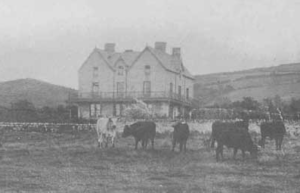Bryn Eisteddfod was built in 1898 by a preacher, inventor and poet called Hywel Tudur. He came to the village to live to be close to his bardic hero, Eben Fardd. The original conveyancing document outlining the details of the purchase of the land is still proudly displayed on our lounge wall in our reception area.
In keeping with Welsh poetic traditions Hywel Tudur named the property ‘Bryn Eisteddfod’ literary translated as ‘the hill of the eisteddfod’. An ‘eisteddfod’ is a cultural festival that encompasses poetry, prose, dance, art, music, theatr and much more. At one time, many centuries ago, it is believed that such a festival was held here, where the property now stands.
There are over 130 local eisteddfod held in Wales each year. They all culminate with the National Eisteddfod held at a different location in Wales each year, in August. It attracts competitors, young and old, from far and wide, has over 250 tradestands and has an attendance that reaches around 250,000 for the week. Highlights of the National Eisteddfod are broadcast on tv and radio morning, noon and night.
The highlight of the festival is the chairing of the bard, a tradition that dates back to 1176. A poetic competition is set 9 months previously and the winner is announced in a ceremony held at the National Eisteddfod in the company of the Gorsedd of the Bards. It includes presenting the winning bard with a chair and elevating him or her to the position and title of Chief Bard, considered one of poetry’s highest accolades.
As it happens, your host Mei is a Chief Bard and won the National Eisteddfod Chair in 1993. The large oak chair is displayed in our reception lounge along with a few other pieces of eisteddfod memorabilia.
• For more information about the ‘eisteddfod’ tradition, click here (opens Visit Wales’ webpage).
• More about Hywel Tudur here. (opens new page).


